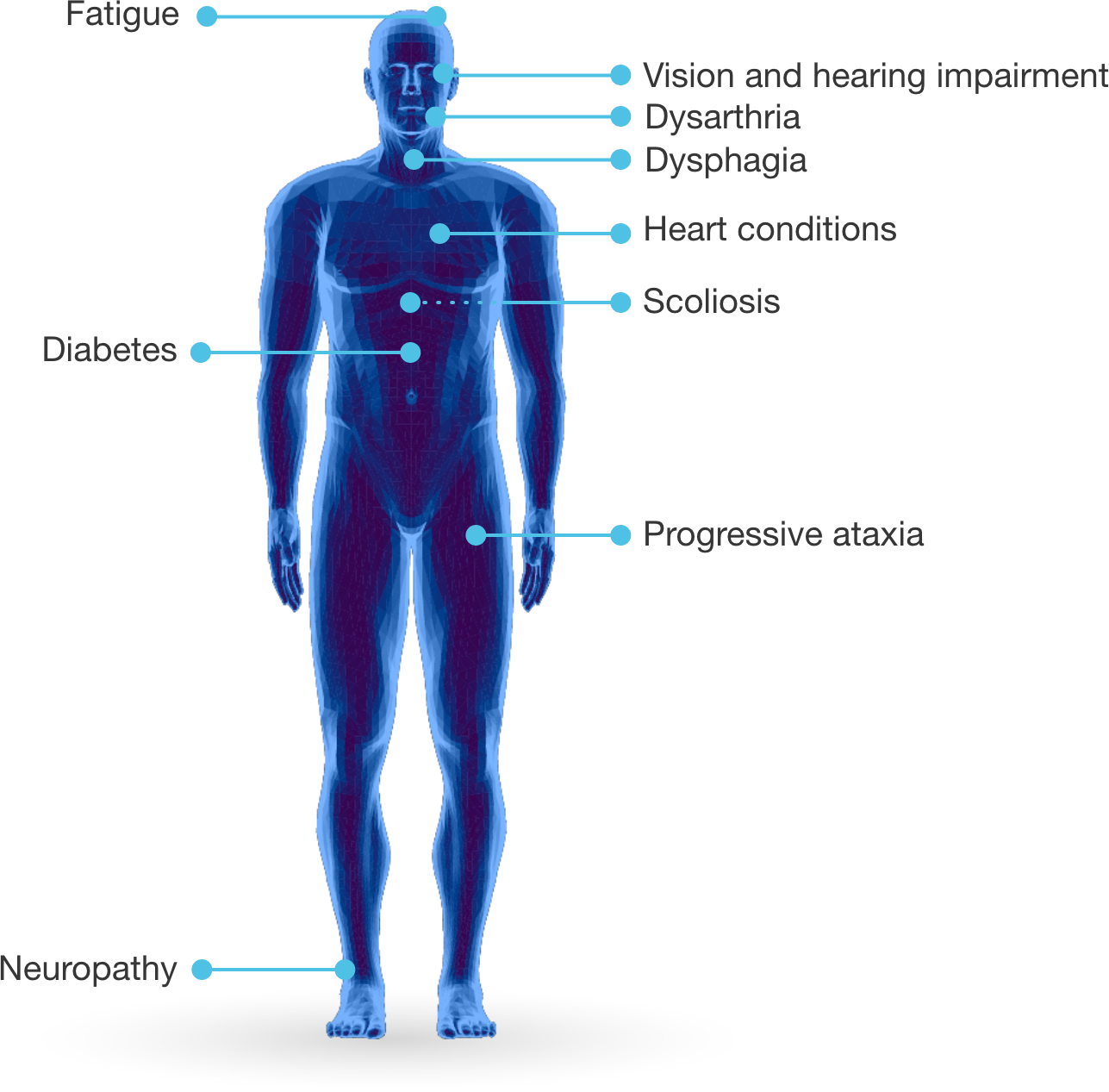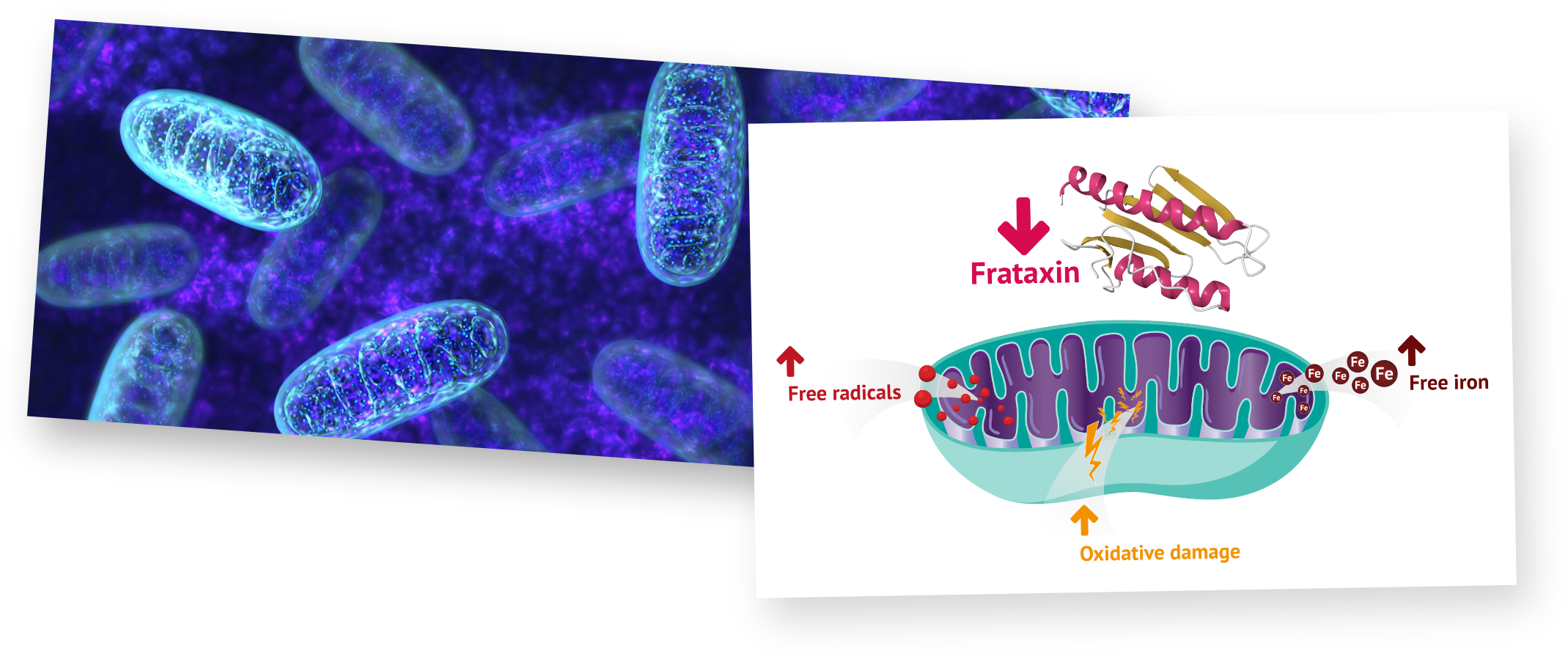
Choose the statement that best describes you:
In the last few years, there have been advances in the management of FA. However, it’s time to turn the page and focus on the root cause—frataxin deficiency—and the potential of increasing frataxin levels as a therapeutic target.

Signs and symptoms of FA include3

FA is inherited in a recessive pattern, where a person receives two mutated copies of the frataxin (FXN) gene.4
FA affects 1 in every 40,000 people globally, and approximately 5000 in the US.5-7
Symptoms of Friedreich’s ataxia typically appear between the ages of 5 and 20, and sometimes can present in patients as late as in their 60s.2
Genetic tests, such as the Southern blot or PCR, can confirm an FA diagnosis by detecting abnormal GAA repeat expansions.8
Due to the multisystem nature of the disease, managing FA takes a multidisciplinary team, including but not limited to neurologists, cardiologists, endocrinologists, and mental health professionals.9
There are a variety of tools and assessments used to measure the progression and severity of FA including mobility tests and quality of life assessments.10

Frataxin plays a key role in cellular metabolism and is present in all tissues, including nervous and heart.2 People with FA typically have a reduction in frataxin levels down to 4% to 29% of levels seen in healthy individuals.8 This deficiency leads to oxidative stress, iron maldistribution, iron accumulation, and cellular dysfunction.2,4
Research has revealed the potential of increasing frataxin levels through therapeutic approaches such as frataxin replacement therapy, gene therapy, and small molecule medicine—welcoming a new chapter in FA.

References:

Choose the statement that best describes you: